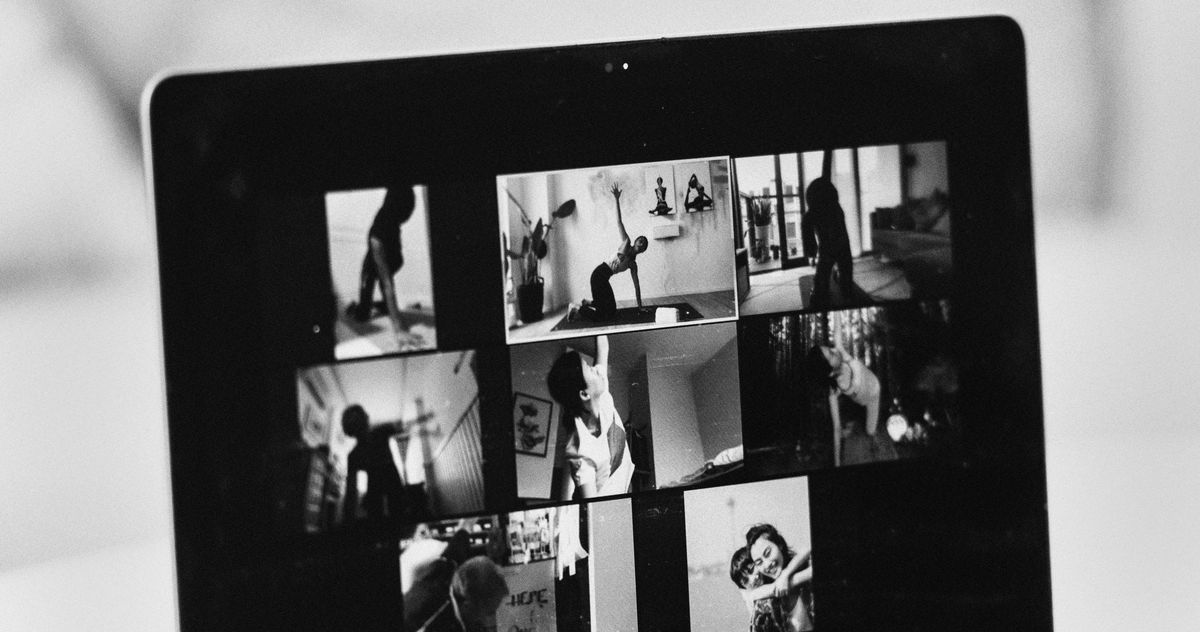
The FBI has warned against a horrifying new trend on the rise amid coronavirus-related social distancing: “Zoombombing.” Users of the videoconferencing platform Zoom are reporting that their meetings are being taken over by outside actors who often project racist or otherwise hateful imagery onscreen or spew abuse to users in the video chat. Worse, these hijackers are targeting communities like schools and universities, organizing efforts, and Alcoholics Anonymous.
With Zoom more popular than ever as more Americans are forced to work and socialize from home (the company says 200 million people used it daily in March), Zoombombing is likely going to become more frequent. Here’s everything to know about what it is and how to protect your group chats:
What is “Zoombombing”?
Zoombombing is a type of cyberattack; it describes when someone hijacks a Zoom teleconferencing chat. Users say their meetings have been interrupted by strangers drawing offensive imagery onscreen, sharing pornographic images, doxxing (sharing the person information of) people in the chat, or taunting them with hate speech and threats.
PCMag reported that Zoombombers have been sharing Zoom meeting IDs and coordinating hacking attacks on online forums, as well as recording their Zoombombing attacks and sharing them on TikTok and YouTube.
Where is “Zoombombing” happening?
Reports of Zoombombing have flooded in from around the country. Multiple universities and schools have allegedly experienced Zoombombing during online classes and meetings. A man defending his graduate dissertation at California State University, Long Beach last week said that someone started drawing genitalia and writing racist words onscreen during his presentation, at which his closest friends and family were present. Ruha Benjamin, an associate professor of African-American studies at Princeton University, said that during a storytelling event for children, someone shared an image of “a chubby white guy in a thong with his genitals bulging” and then used the N-word. And multiple users broke into a school-district meeting in California to chant the same slur.
Zoombombers have broken into multiple Alcoholics Anonymous meetings, which have moved online to comply with stay-at-home orders. One New York group said that someone entered their meeting to say “Alcohol is soooo good.” Churches and religious groups also say their events have been hacked; according to Catholic News, “a Shabbat service held via Zoom by a Bay Area synagogue was crashed by Nazis,” and “a livestreamed church service in Los Angeles was hacked and replaced with porn.”
Melissa Byrne, the New York and California grassroots organizing director for the Bernie Sanders 2020 campaign, wrote on Twitter on April 1 that she had experienced her “second community call of the day with horrific zoombombing. @zoom_us clearly is okay with hate, racism, and sexual harassment.”
What has Zoom said about it?
A Zoom spokesperson told CNN that the company is “deeply upset to hear about the incidents involving this type of attack and we strongly condemn such behavior,” and that they “appreciate all efforts to raise awareness around how to best prevent these kinds of attacks.” Zoom also said it began “actively educating users on how they can protect their meetings and help prevent incidents of harassment” on March 20.
How can you protect yourself from Zoombombing?
The FBI has recommendations for making your Zooming more secure, including:
• Do not make meetings or classrooms public. In Zoom, there are two options to make a meeting private: You can require a meeting password or use the waiting-room feature and control the admittance of guests.
• Do not share a link to a teleconference or classroom on a publicly available social-media post. Provide the link directly to specific people.
• Manage screen-sharing options. In Zoom, change screen-sharing to “Host Only.”
• Make sure that users are using the updated version of remote access/meeting applications.
Zoom also has recommendations on its security page.
from Hacker News https://ift.tt/2JBkUCW
No comments:
Post a Comment
Note: Only a member of this blog may post a comment.